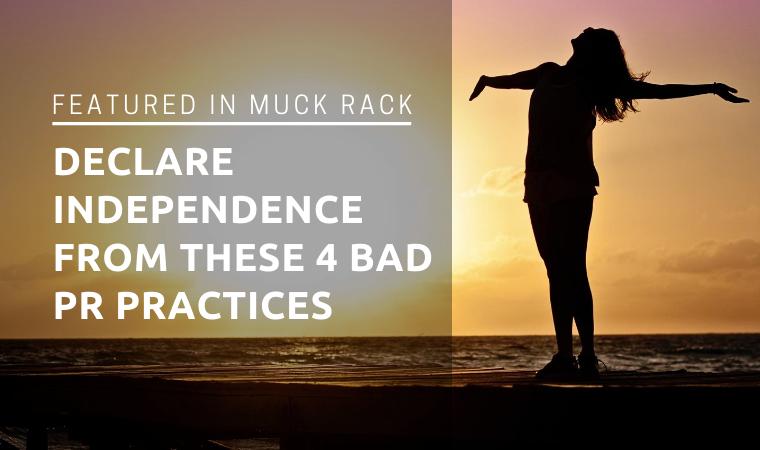
Independence Day will undoubtedly feel different this year.
This includes the PR campaigns for companies that would normally try to link their grills, food and other commodities to the holiday.
Ahead of July 4th, we’re taking a look at four PR and media relations crutches that plague the industry year-round and draw criticism from our media counterparts.
1. Boring, dense pitches
There’s no silver bullet to crafting a perfect media pitch, but something most—if not all—reporters appreciate is one that gets to the point. The quickest way to the trash can is to make a journalist’s eyes glaze over from dense information and endless scrolling. Bulleted points are your friend for making a pitch easy to read.
What’s the cure for avoiding boring pitches? Link a run-of-the-mill personnel announcement to an industry trend or leverage your subject matter expert’s thought leadership capabilities. And surely you’ve already declared independence from the ‘spray and pray’ method of pitching by investing your time in targeted media relations.
According to Muck Rack’s 2020 State of PR survey, 80% of PR pros say it’s important to send personalized or customized pitches with relevant story ideas to reporters. It might take longer than a BCC mass distribution, but you’ll reap greater dividends from connecting with the right reporters and outlets.
2. Pesky follow-ups without purpose
Building media relationships via e-mail is key.
In fact, 93% of reporters still prefer to be pitched this way, according to the State of Journalism survey.
But there are more strategic alternatives to “just checking in” or “following up” to see if a reporter received your pitch. What purpose did that follow-up e-mail serve other than to bug a journalist who may or may not have already deleted your off-topic story idea that didn’t pertain to their beat?
Yes, it’s true that even the best pitches don’t get through right away due to constant deadlines and overflowing inboxes. A better way to follow-up is to provide some additional information that will advance the story or conversation. Hold back on some of the secondary details in your initial outreach that could prove useful for future gentle nudges. Or you could always go with a personal favorite courtesy of pitching guru Michael Smart: “Any interest?” It’s short, sweet and to the point.
[bctt tweet=”Following up on a PR pitch? Try including new information to advance the conversation.” username=”StantonComm”]
3. Clichés
PR isn’t different from any industry that comes equipped with jargon and hackneyed phrases.
If you’re looking for a new spin on the Zoom virtual happy hour, make a drinking game out of spotting all of the trite clichés that make your press release a buzzkill. We’re looking at you, “cutting-edge,” “disruptive,” and “revolutionary.”
Leave the superlative language for the media and influencer gatekeepers that determine if your client’s product is actually unique or a game-changer.
4. Metrics that don’t matter
Bloating media reports with vanity metrics is a well-known industry crutch. In fact, nearly three out of four respondents from Muck Rack’s annual survey said difficulty measuring business impact was their top challenge.
It’s up to the professionals in our field to showcase the information and data that actually matter to our clients and companies.
Tired: impressions and clicks. Wired: showcasing the ROI of a PR campaign through increased website traffic and referrals, purchases and other revenue sources.
Better yet, knock down the siloed landscape between PR, marketing and advertising for an integrated marketing communications approach to helping the C-Suite understand the true value of a campaign.
If these bad habits have you seeing red, white-out all four from your daily practice so that they disappear into the blue.